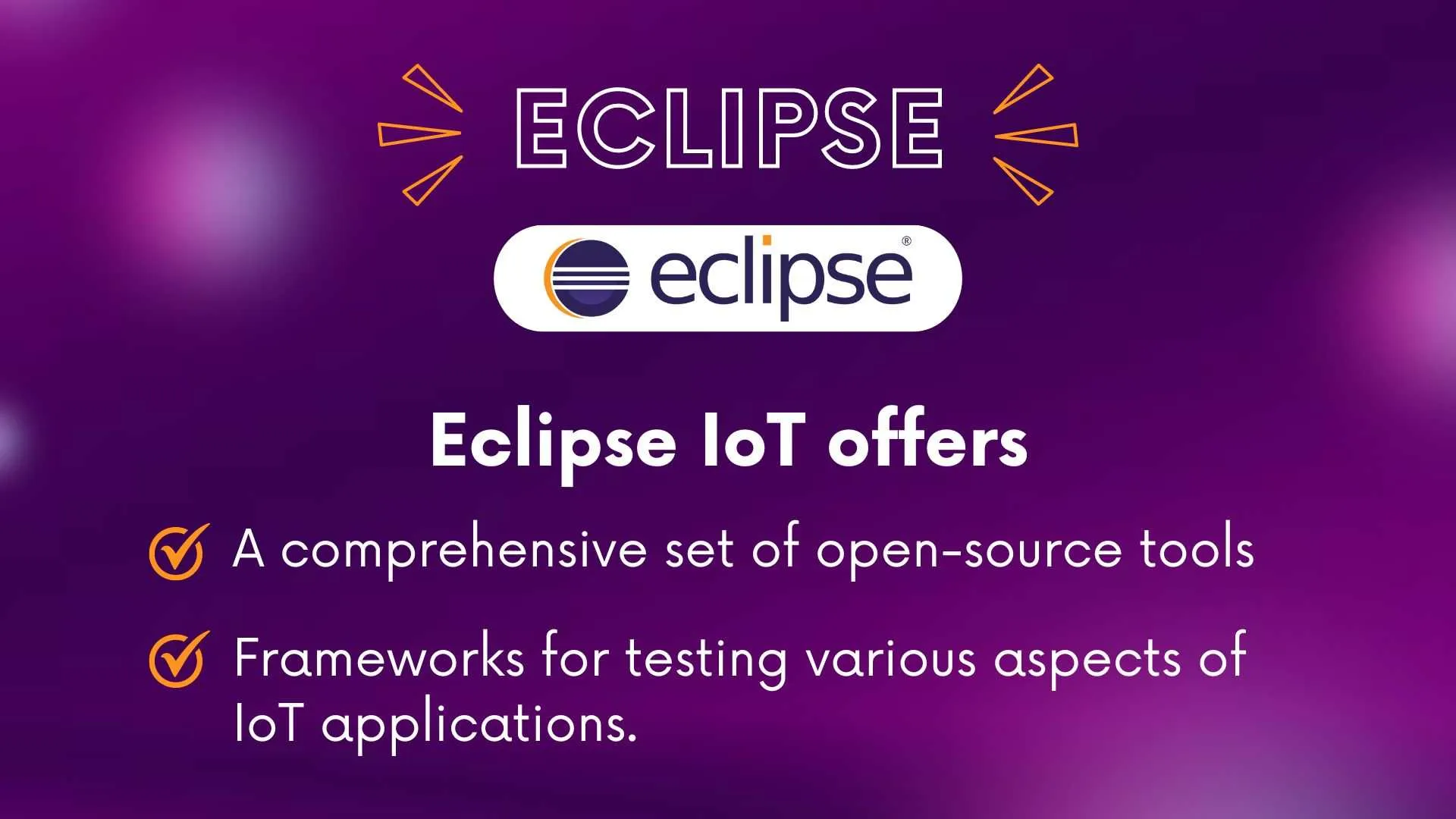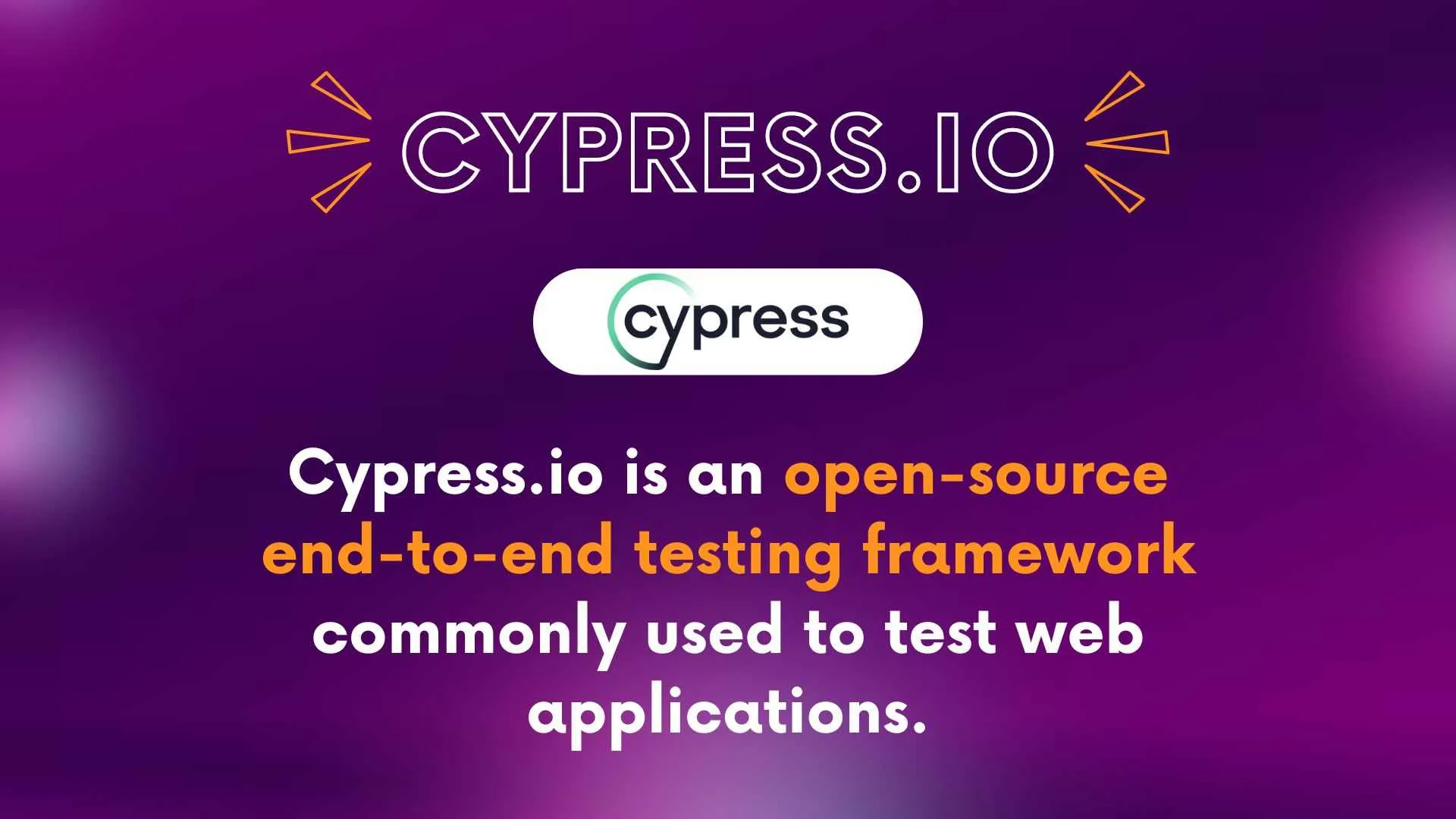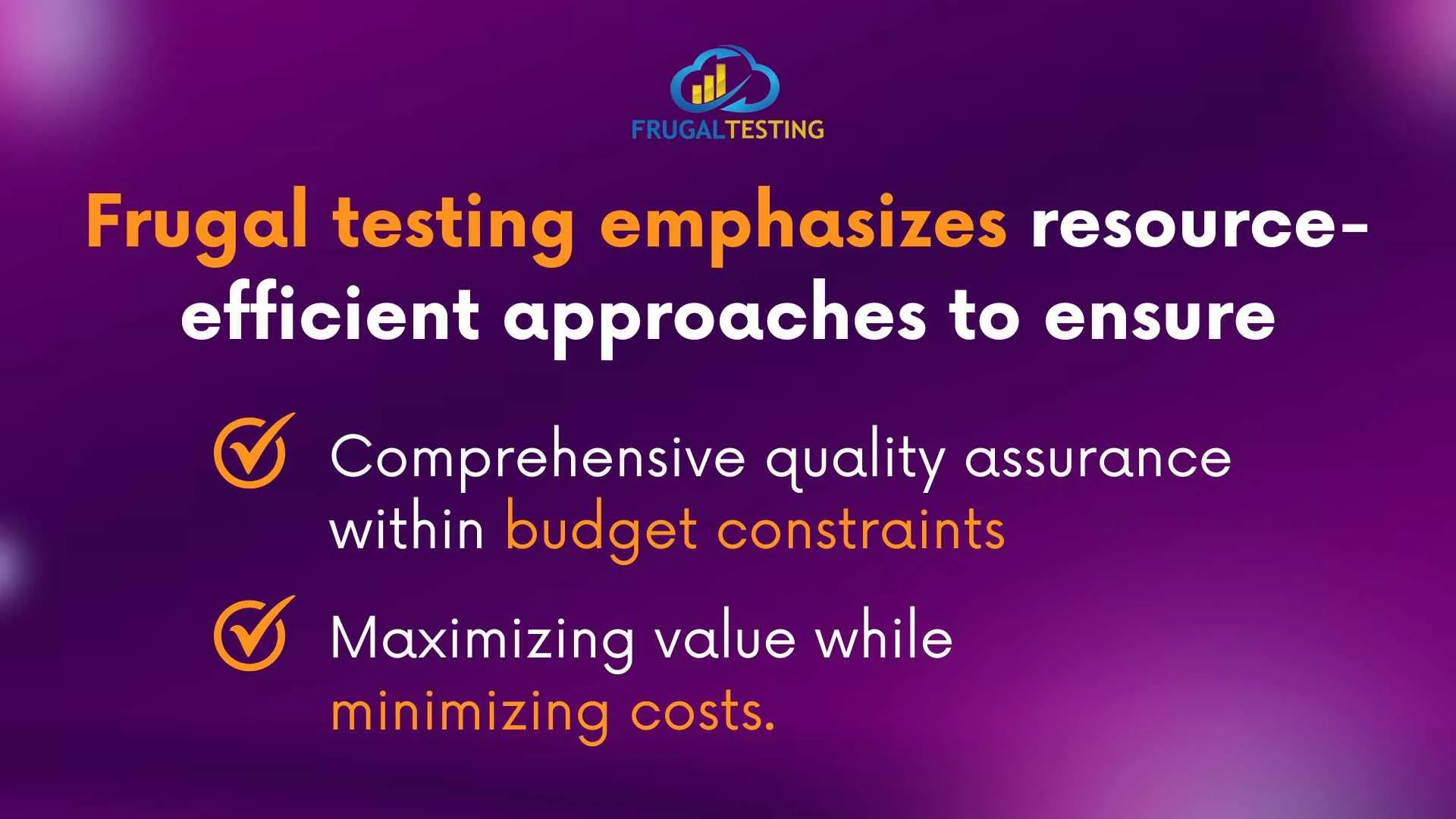According to a survey by IoT Analytics, 52% of companies have identified security concerns as the biggest challenge in IoT adoption. This statistic underscores the critical importance of robust testing methodologies to ensure IoT ecosystems' reliability, integrity, and security.
So, in this blog, we will delve into
📌 Importance of IoT Testing: Significance of IoT testing adoption.
📌 Definition of IoT Testing: IoT testing explained.
📌 Differences from Traditional Testing: IoT testing does differ from traditional practices.
📌 Top Testing Methods for Better IoT Communication: Key testing methods for improving IoT communication.
📌 Highlighting Best Security Testing Types: Comprehensive security testing methods for IoT devices.
📌 Challenges and Role of IoT Test Simulators: Challenges faced by IoT testing
📌 IoT Testing Frameworks and Services: Popular IoT testing frameworks and services

What is IoT testing?
IoT testing evaluates the functionality, performance, security, interoperability, and reliability of Internet of Things (IoT) devices and systems. It involves assessing the behavior of IoT devices in various real-world scenarios, verifying their compliance with standards and specifications, and ensuring that they operate as intended within interconnected ecosystems.
IoT testing encompasses a wide range of activities, including functional testing, performance testing, security testing, interoperability testing, usability testing, and more, to deliver robust, secure, and reliable IoT solutions.
Choosing between manual and automated testing: The manual testing process in IoT involves human testers executing test cases to evaluate the functionality, performance, security, and interoperability of IoT devices and systems, complementing automated testing efforts to ensure comprehensive validation of the complex IoT ecosystem.

What makes it different from traditional testing practices?
IoT differs from traditional testing practices in several key ways:
📍Complex Ecosystem: IoT testing involves testing not just the device itself but also its interactions with other devices, sensors, networks, and backend systems. This complexity requires specialized testing approaches to ensure seamless integration and interoperability.
📍Diverse Range of Devices: IoT encompasses various devices with different form factors, operating systems, communication protocols, and capabilities. Testing IoT devices requires expertise handling this diversity and ensuring compatibility across various platforms.
📍Data Integrity and Security: IoT devices often collect and transmit sensitive data, making security a critical concern. IoT testing involves assessing the security vulnerabilities of devices and networks and ensuring data integrity and privacy.
📍Intermittent Connectivity: Unlike traditional devices, IoT connected devices may operate in intermittent or unreliable network connectivity environments. Testing must account for these conditions and ensure that devices can handle network disruptions gracefully.
📍Scalability and Performance: IoT systems may need to support many devices simultaneously. Testing scalability and performance involves evaluating IoT solutions' performance under different loads and conditions.
📍Edge Computing and Edge Devices: With the rise of edge computing, IoT testing now extends to edge devices and platforms. Testing at the edge requires specialized techniques to validate functionality and performance in decentralized environments.
📍Firmware and Over-the-Air (OTA) Updates: IoT devices often receive firmware updates over the air. Testing must verify the reliability and security of OTA updates, ensuring that devices can be updated without compromising functionality or security.
📍Real-world Scenarios: IoT testing often involves simulating real-world scenarios and environments to ensure that devices and systems perform as expected in different conditions, such as temperature extremes or physical obstructions.

Top Testing Methods for Better IoT Communication (2024)
Here are some top testing methods for ensuring better IoT communication:
- Protocol Conformance Testing: Verify that IoT devices adhere to communication protocols such as MQTT, CoAP, HTTP, or AMQP. This ensures there are compatibility issues and the compatibility and interoperability among devices from different manufacturers.
- Interoperability Testing: Test how well IoT devices communicate and work together within a network. This involves testing devices from different vendors to ensure they can exchange data seamlessly.
- Security Testing: Evaluate the security measures implemented in IoT devices and networks. This includes testing for vulnerabilities like weak authentication, insecure data transmission, and susceptibility to attacks like DDoS or man-in-the-middle.
- Performance Testing: Assess the performance of IoT communication networks under various conditions, such as heavy loads, network congestion, or intermittent connectivity. This ensures that devices can reliably transmit data within acceptable latency and throughput parameters.
- Scalability Testing: Determine how well IoT communication systems scale as the number of connected devices increases. This involves testing the system's ability to handle large volumes of data and accommodate a growing number of devices without compromising performance.
- Reliability Testing: Validate the reliability of IoT communication by testing for issues such as packet loss, message duplication, and message delivery failures. This ensures that critical data is transmitted reliably without loss or corruption.
- Quality of Service (QoS) Testing: Evaluate the QoS parameters defined for IoT communication networks, such as latency, jitter, and reliability. This ensures the network meets the required standards for delivering different data types.
- Power Consumption Testing: Assess the power consumption of IoT devices during communication to ensure they meet energy efficiency requirements and have sufficient battery life for their intended use cases.
- Edge Computing Testing: Test the communication between IoT devices and edge computing nodes to ensure efficient data processing and reduced latency. This involves evaluating the performance of edge computing algorithms and their impact on communication.
- Firmware Update Testing: Validate the development cycle of updating firmware on IoT devices to ensure it does not disrupt communication or introduce vulnerabilities. This includes testing over-the-air (OTA) updates and rollback procedures.

Highlighting Best Security Testing Types for IoT Devices 2024
By conducting comprehensive security testing using these methods, IoT device manufacturers and development team can identify and address security vulnerabilities, reducing the risk of cyberattacks and protecting the integrity and confidentiality of IoT systems. Here are some of the best security types of testing for IoT devices in 2024:
- Penetration Testing (Pen Testing): Penetration testing involves simulating cyberattacks on IoT devices to identify vulnerabilities and weaknesses in their security defenses. This includes testing for common attack vectors such as unauthorized access, injection attacks, and privilege escalation.
- Regression testing: This in IoT ensures that new updates or changes to IoT devices and systems do not negatively impact existing functionality by retesting previously validated features and functionalities to maintain the reliability and stability of the IoT ecosystem.
- Vulnerability Assessment: Conducting regular vulnerability assessments helps identify known vulnerabilities in IoT devices, firmware, and software components. This involves using automated tools and manual techniques to scan for weaknesses and prioritize remediation efforts.
- Firmware Analysis: Analyzing the firmware of IoT devices helps uncover security flaws such as hard coded credentials, backdoors, and insecure configurations. This involves reverse engineering firmware to identify vulnerabilities and assess their impact on device security.
- Secure Code Review: Reviewing the codebase of IoT devices for security vulnerabilities helps identify potential weaknesses such as buffer overflows, input validation errors, and insecure encryption algorithms. This involves manual inspection and automated analysis of code to identify security issues.
- Protocol Analysis: Analyzing communication protocols used by IoT devices helps identify security weaknesses such as plaintext transmission, lack of encryption, and insufficient authentication mechanisms. This involves sniffing network traffic and analyzing protocol implementations for security flaws.
- Cryptographic Assessment: Assessing the cryptographic mechanisms used by IoT devices helps ensure the confidentiality, integrity, and authenticity of data transmitted and stored. This involves evaluating encryption algorithms, key management practices, and secure random number generation.
- Authentication and Authorization Testing: Testing IoT devices' authentication and authorization mechanisms helps ensure that only authorized users and devices can access sensitive resources and perform privileged actions. This involves testing for weak passwords, insecure authentication protocols, and insufficient access controls.
- Physical Security Assessment: Assessing the physical security of IoT devices helps identify vulnerabilities such as tamper resistance, unauthorized access to device components, and physical theft. This involves testing device enclosures, tamper-evident seals, and anti-tampering mechanisms.
- Supply Chain Security Assessment: Assessing the security of the supply chain helps identify potential risks such as counterfeit components, firmware tampering, and supply chain attacks. This involves verifying the integrity of the supply chain and implementing measures to mitigate risks.
- Privacy Assessment: Assessing the privacy implications of IoT devices helps ensure that user data is handled in compliance with privacy regulations and best practices. This involves evaluating data collection practices, data storage mechanisms, and data sharing policies to mitigate privacy risks.

Challenges and role of IoT test simulators in replicating real-world scenarios
IoT test simulators play a crucial role in replicating real-world scenarios for testing IoT devices and systems. However, they also face several challenges in accurately emulating the complexities of real-world environments.
Role of IoT Test Simulators:
- Replicating Real-World Scenarios: IoT test simulators replicate real-world scenarios by emulating diverse environmental conditions, network configurations, and device interactions. This enables comprehensive testing of IoT devices and systems in controlled environments.
- Scalability Testing: IoT test simulators allow for testing IoT systems' scalability by simulating many devices and network nodes. This helps identify performance bottlenecks, scalability, and other potential issues under different load conditions.
- Interoperability Testing: IoT test simulators facilitate interoperability testing by supporting multiple communication protocols and standards. This enables the compatibility testing of IoT devices from different vendors and ensures seamless communication between devices.
- Performance Evaluation: IoT test simulators enable performance evaluation by simulating various network conditions, including latency, bandwidth, and packet loss. This helps assess the responsiveness and reliability of IoT systems under different network conditions.
- Security Testing: IoT test simulators support security testing by simulating various security threats and attack scenarios. This includes testing the effectiveness of security mechanisms such as encryption, authentication, and access control in mitigating security risks.
- Firmware and Software Testing: IoT test simulators facilitate testing of firmware and software updates by emulating and deploying updates to IoT devices in real-world scenarios. This helps ensure the reliability and security of firmware and software updates.

Here are some challenges and the role of IoT test simulators:
Challenges:
👉🏻Diverse Environmental Conditions: Real-world IoT deployments operate in diverse environmental conditions, including variations in temperature, humidity, and electromagnetic interference. Simulating these conditions accurately is challenging.
👉🏻Scale and Complexity: IoT systems often involve many interconnected devices, sensors, and actuators, leading to complex interactions and dependencies. Simulating such scale and complexity requires robust simulation techniques.
👉🏻Interoperability: IoT devices from manufacturers may use different communication protocols and standards. Ensuring interoperability between devices in simulated environments requires support for multiple protocols and standards.
👉🏻Dynamic Network Conditions: IoT devices may operate in dynamic network conditions, including fluctuations in network latency, bandwidth, and packet loss. Simulating these conditions accurately is essential for evaluating the performance and reliability of IoT systems.
👉🏻Security Considerations: Testing the security of IoT devices and systems requires simulating various security threats and attack scenarios, including malware, denial-of-service attacks, and unauthorized access. Simulating such security threats without compromising the integrity of the test environment is challenging.

Testing Digital Twins in IoT
Testing digital twins in IoT is essential to ensure that they accurately represent physical assets or systems and provide valuable insights for decision-making. Here are some key aspects and approaches to testing digital twins in IoT:
👉🏻Data Accuracy and Consistency: Verify that the data collected from physical sensors accurately reflects the state of the corresponding digital twin. This involves testing data acquisition, processing, and synchronization mechanisms to ensure that the digital twin remains synchronized with its physical counterpart.
👉🏻Model Validation: Validate the mathematical models' accuracy to simulate the behavior of physical assets or systems in the digital twin. This involves comparing the predictions generated by the digital twin with real-world observations to ensure that the model accurately represents the physical reality.
👉🏻Functional Testing: Test the functionality of the digital twin to ensure that it performs as expected and provides the necessary insights and analytics. This involves testing features like data visualization, analytics algorithms, and integration with other IoT systems and applications.
👉🏻Integration Testing: In IoT testing, integration testing ensures that different IoT real devices, sensors, networks, and backend systems cooperate and smoothly communicate within the networked ecosystem.
👉🏻Performance Testing: Evaluate the performance of the digital twin under different conditions, such as varying data loads, network latency, and computational resources. This involves testing scalability, responsiveness, and reliability to ensure the digital twin can handle the expected workload and provide timely insights.
👉🏻Security Testing: Assess the security of the digital twin to ensure that sensitive data is protected and the integrity of the system is maintained. This involves testing for vulnerabilities such as unauthorized access, data breaches, and tampering with the digital twin's data or models.

The Best IoT Testing Tools for Real-World Applications (2024)
As of 2024, several IoT testing tools cater to various aspects of testing real-world IoT applications. Here are some of the best IoT testing tools widely used for real-world applications:
Eclipse IoT: It includes tools for testing protocols (e.g., MQTT, CoAP), device management, security, and more. Eclipse IoT projects like Eclipse Ditto and Eclipse Kapua provide robust testing capabilities for IoT applications.

Katalon Studio: It offers features like record-and-playback, script customization, and integrations with popular CI/CD tools. Katalon Studio can automate testing IoT device interfaces, APIs, and backend systems.

Postman: It provides a user-friendly interface for designing, testing, and debugging APIs, as well as features for automating API tests and generating test reports. Postman is suitable for testing IoT device APIs, backend services, and third-party integrations.

Cypress.io: It can also be used to test IoT applications with web-based user interfaces. Cypress.io provides features for writing and executing automated tests, including support for browser automation, network mocking, and test reporting.

Jenkins: It provides plugins for integrating various performance testing tools, building tools, and version control systems, allowing the development team to automate testing and deployment processes in IoT projects.

TestProject: It provides a visual test recorder, built-in test libraries, and integrations with popular test frameworks, making it easy to get started with test automation in IoT projects.

A Case Study on IoT Testing
This case study looks at how Samsung makes smart devices and tests its products in a few key steps to make them work better and keep them safe. They did this because, increasingly, smart devices were being used, and they wanted to ensure theirs were good. They focused on fixing any problems with how the devices work and ensuring they are safe from hackers.
Testing performed:
- Functional Testing: Ensured smart devices functioned correctly, including remote control and scheduling, by testing various scenarios under different conditions.
- Performance Testing: Assessed smart device responsiveness, reliability, and scalability through stress and endurance testing to simulate heavy usage scenarios.
- Security Testing: Identified and addressed vulnerabilities in smart devices through penetration testing, vulnerability scanning, and code review.
- Interoperability Testing: Ensured smooth integration with third-party platforms by compatibility testing with popular smart home platforms, protocols, and standards.
- User Experience Testing: Evaluated smart device interfaces for seamless user experience, which includes usability, intuitiveness, and accessibility through user feedback and usability testing sessions.
The IoT testing process significantly improved smart device reliability and security, promptly addressing identified potential issues and enhancing product quality and user satisfaction. This case study underscores the importance of robust testing practices in mitigating risks and maximizing IoT technology potential.
So, let’s wrap it up
Thorough testing helps companies make safer and more reliable IoT devices and services. By testing for things like how well devices work, how fast they are, and how secure they are, businesses can ensure their IoT products meet high standards.
Keeping up with new technology and standards is crucial to staying ahead. Testing will always be a key part of ensuring IoT projects work well and last long.

People Also Ask
👉🏻What components are typically included in IoT Testing?
IoT testing typically includes components such as functional testing, performance testing, security testing, interoperability testing, and user experience testing.
👉🏻How does an IoT Testing Cluster simulate real-world IoT environments?
An IoT testing cluster simulates real-world IoT environments by replicating diverse network conditions, device interactions, and environmental factors.
👉🏻Are any open-source or commercial solutions available for building an IoT test?
Yes, open-source and commercial solutions are available for building IoT tests, providing flexibility in choosing the most suitable option based on project and functional requirements and budget constraints.
👉🏻What are the key features to look for in IoT Testing?
Key features in IoT testing include support for multiple communication protocols, scalability, interoperability with various IoT real devices and platforms, comprehensive security testing capabilities, and user-friendly test management interfaces.
👉🏻What are the costs associated with using IoT Testing?
Costs associated with using IoT testing vary depending on factors such as the complexity of testing requirements, the scale of deployment, the chosen performance testing tools or platforms, and any additional support or services required.


-p-500.webp)


%201.webp)

